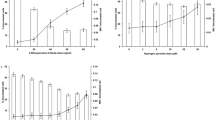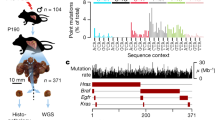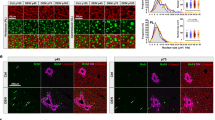Abstract
A WIDE variety of chemical mutagen/carcinogens induce sister chromatid exchanges (SCE) in cultured Chinese hamster cells and can thus be studied at the chromosomal level1,2. Certain polycyclic hydrocarbons, such as benzo(a)-pyrene, 3-methylcholanthrene, dimethylbenzanthracene and others are important in the aetiology of human bronchial carcinoma3. The substances are not themselves carcinogenic, but are converted to carcinogenic epoxides by the enzyme arylhydrocarbonhydroxylase.4 Epoxides bind non-enzy-matically to DNA, unless they are converted enzymatically to inert water-soluble metabolites by epoxide hydratase5 and glutathione-S-transferase6. The carcinogenic effect of poly-cyclic hydrocarbons is closely connected with the regulation of the enzyme activities and genetic variability can thus be expected. It has been observed at the population level by family studies7 and at the cellular level by biochemical differences in the hydrocarbon-degrading enzyme system8. We have investigated the possible induction of sister chromatid exchanges by benzo(a)pyrene and show that the rate of SCE does not correlate with different rates of benzpyrene metabolism. We therefore suggest that genetic differences in benzpyrene metabolism are unrelated to genetic variation in the predisposition to bronchial carcinomas.
This is a preview of subscription content, access via your institution
Access options
Subscribe to this journal
Receive 51 print issues and online access
$199.00 per year
only $3.90 per issue
Buy this article
- Purchase on Springer Link
- Instant access to full article PDF
Prices may be subject to local taxes which are calculated during checkout
Similar content being viewed by others
References
Perry, P., and Evans, H. J., Nature, 258, 121 (1975).
Latt, S. A., Proc. natn. Acad. Sci. U.S.A., 70, 3395–3399 (1973).
Gray, N., and Hill, D., Lancet, i, 1252–1253 (1975).
Grover, P. L., Sims, P., Mitschley, B. C. V., and Roe, F. J. C., Br. J. Cancer, 31, 182 (1975).
Oesch, F., and Glatt, H. R., Experientia, 31, 720 (1975).
Nemoto, N., Gelboin, H. V., Habig, H. W., Ketley, J. N., and Jakoby, W. B., Nature, 255, 512 (1975).
Tokuhata, G., and Lilienfeld, A. M., J. natn. Cancer Inst., 30, 289–312 (1963).
Kellermann, G., Lutyen-Kellermann, M., and Shaw, C. R., Am. J. Hum. Genet., 25, 327–331 (1973).
Diamond, C., and Gelboin, H. V., Science, 166, 1023 (1969).
Benedict, W. F., Considine, N., and Nebert, D. W., Molec. Pharmac., 6, 266–277 (1973).
Nebert, D. W., Benedict, W. F., Gielen, J. E., Oesch, F., and Daly, J. W., Molec. Pharmac, 8, 374–379 (1972).
Kellermann, G., Shaw, C. R., and Luyten-Kellermann, M., New Engl. J. Med., 289, 934–937 (1973).
Böyum, A., Scand. J. clin. Lab. Invest., 21, Suppl., 97 (1968).
Hubermann, E., and Sachs, L., Int. J. Cancer, 11, 412–418 (1973).
Author information
Authors and Affiliations
Rights and permissions
About this article
Cite this article
RÜDIGER, H., KOHL, F., MANGELS, W. et al. Benzpyrene induces sister chromatid exchanges in cultured human lymphocytes. Nature 262, 290–292 (1976). https://doi.org/10.1038/262290a0
Received:
Accepted:
Published:
Issue Date:
DOI: https://doi.org/10.1038/262290a0
This article is cited by
Comments
By submitting a comment you agree to abide by our Terms and Community Guidelines. If you find something abusive or that does not comply with our terms or guidelines please flag it as inappropriate.



